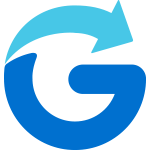Guest blog post by Chelsea Cook
Progressively more consumers are recognizing the convenience of buying online, with product delivery right to their door. This runs across the board for all types of products, including home delivery for retail, furniture, and groceries.
The market for purchasing groceries online is increasing every year. People are busier than ever – the expediency of having their weekly groceries brought directly to their doorstep is highly appealing. From larger grocery chains to small local grocers, the demand for grocery delivery is changing the way retailers look at their marketing strategy.
Due to the demand for convenience, grocery retailers are starting to broaden their services to include online ordering and home delivery. In the UK, online shopping for food products has doubled in the last two years, with projections showing that by 2020 the United Kingdom will become the second largest country to take advantage of online grocery shopping.
Online groceries and the last mile challenge
With so much demand and high expectations from consumers, e-grocers face some unique challenges. One of these is the last mile challenge. When consumers order their groceries online, they expect immediate delivery of products they want to use that same day. There’s also the concern of safely delivering perishable items. How do e-grocers solve the last mile challenge and meet these expectations without an increase in cost to their customers or a loss for their business?
Another factor when it comes to online grocery shopping is the consumer concern for quality products. Customers don’t only want their groceries delivered to them quickly, they also need to know that each item is going to be of top quality, particularly when it comes to produce and meat. If products don’t meet consumer satisfaction, shoppers will buy from the competition.
Using technology to meet demand
One of the ways online grocers can solve the last mile challenge is by using technology that has been designed to improve efficiency without raising costs and cutting into the profit margin.
There are several types of technology that can help e-grocers get their products to their customers, with more solutions being developed as demand grows.
Visibility and traceability
According to a study by GT Nexus, “Consumers want supply chain visibility and performance or they will switch brands.” Customers want to be able to trace where their food is coming from. One tech solution is to attach sensors to packages. These sensors can provide real-time information, such as temperature, about the condition of produce and other groceries during the delivery time. Consumers would be able to know if frozen items were still at the right freezing temperature when they left the warehouse. And if items aren’t delivered frozen, e-grocers would be able to trace where the problem occurred – back at the warehouse or during delivery time.
Online customer subscriptions
Another last mile challenge for e-grocers is managing inventory. Consumers want to know that when their order is delivered there aren’t going to be any missing items necessitating a trip to the store. Technology can help with this, too. Online grocers can develop a subscription service for their customers, allowing them to have a standing order each week for products they regularly purchase. Grocers can use this technology to better manage their inventory, resulting in more satisfied customers and increased business.
Exact delivery times
Perhaps the biggest last mile challenge is keeping customers accurately informed of delivery time. Once consumers have placed their order their next concern is being at home when their groceries are scheduled to arrive. But they don’t want a four-hour window of when this might be happening; even a two-hour window for delivery is an inconvenience for people who use an online grocer to save time.
E-grocers can use advanced SMS messaging and email to let their customers know when the delivery is on the way. This allows their customers to be at home at a more exact time rather than anticipate delivery anytime during 2 to 4 hours. Further technology also allows customers to keep themselves updated.
Relying on tech support
Regardless of the product being ordered online, using technology to better manage the last mile challenge is one of the best solutions. Online retailers need to use the tools available to them to build a bridge between consumer ordering and delivery. There are many software solutions available that can help solve the last mile challenge, such as scheduling solutions.
There’s always that period of adjustment and learning when you start using technology to solve business solutions. An IT outsourcing service can ensure the technological side of your online business is on track, helping you get the most out of software solutions.


